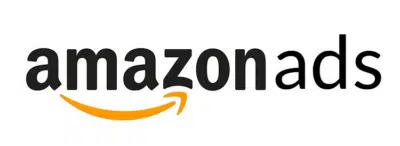How To Think About Your Programmatic Budget
Effectively managing your programmatic budget requires a strategic mindset and meticulous control. What tactics can ensure that your advertising expenditures yield the best return on investment? This piece offers insights into establishing, allocating, and adjusting your programmatic budget to secure high-impact campaigns while avoiding unnecessary spending.
Key Takeaways
- Allocating your programmatic advertising budget should rely on historical performance data, focusing on channels that drive valuable traffic and conversions rather than arbitrary spending.
- Strategic planning and resource allocation in programmatic spending necessitate clear objectives, an understanding of the target audience, and the utilization of technologies like Data Management Platforms for omnichannel campaigns to optimize reach and ROI.
- Data plays a pivotal role in optimizing programmatic budgets. Utilizing data alongside AI-driven technologies enables real-time adjustments, enhancing campaign performance and cost efficiency.
Understanding Programmatic Budget Allocation
Program managers rely on a data-driven strategy to determine the budget for programmatic advertising. Examining past performance metrics is crucial for setting a spending benchmark for upcoming periods. This analysis involves carefully examining extensive website traffic statistics and past purchase records, providing invaluable insights into the most effective marketing channels in terms of generating quality traffic and maximizing conversion rates.
Simply collecting and reviewing data isn’t enough. Utilizing this information allows for optimizing how funds are distributed across channels. Managers can ensure more cost-effective investment by funneling resources toward platforms that consistently deliver high-value engagement and sales conversions. Consequently, the budget transcends being merely an arbitrary figure; it evolves into a calculated instrument guiding programmatic expenditures toward endeavors with the highest return potential.
Strategic Planning for Programmatic Spend
Before allocating any budget to your programmatic campaigns, it’s crucial to establish a well-thought-out strategy. This should include having well-defined objectives, a thorough understanding of the target audience, utilizing forecasting instruments for preliminary visibility into the potential reach and expected outcomes of your campaign, optimizing before going live, and forecasting the success of your campaign by leveraging particular performance indicators.
Allocating Resources Wisely
Effective resource allocation in programmatic advertising revolves around several factors. The cost of advertising placement, for instance, is influenced by the size of the creative, the geographical location of the ad traffic, and the specificity of targeting options. A small change in any of these factors can have a significant impact on your overall costs.
Moreover, with the rise of omnichannel campaigns orchestrated using a Data Management Platform (DMP), you can ensure consistent brand messaging across multiple channels, including connected TV, digital display, and retail media. This approach not only amplifies your brand presence but also optimizes your spending by reaching your audience wherever they are.
Digital marketers who carefully consider these factors can effectively distribute their programmatic budget for optimal reach and Return on Investment (ROI). It’s not about spending more, it’s about spending smarter.
Maintaining Control Over Your Spend
Maintaining strict control over programmatic expenditure is vital to maximize the value of your campaigns and avoid exceeding your budget. Employing platforms that incorporate header bidding technology can facilitate this.
By using these advanced platforms, both publishers and advertisers gain enhanced capability to manage their advertising inventory effectively, boost their income potential, and avoid unnecessary outlays. Ensuring rigorous management of your account’s spend not only protects your budget but also heightens the chances that your campaigns will achieve their performance objectives by employing efficient resource allocation strategies.
Role of Data in Budget Optimization
In today’s data-driven landscape, the significance of data in refining budgets is undeniable. Utilizing both first-party and third-party data can sharpen targeting precision and facilitate the customization of programmatic campaigns. Indeed, about half of a budget may be more effectively allocated by leveraging this kind of information.
Analytical tools provide crucial insights for honing targeting techniques, crafting creative strategies appropriately, and setting bidding parameters to achieve established performance metrics.
Artificial intelligence-driven optimization approaches within programmatic platforms promptly digest vast amounts of data to make adjustments in bids and allocations related to your budget, enhancing overall campaign effectiveness dynamically. Data thus serves not just as a guide for budget-related decision-making, but also acts as the driving force behind technologies designed to finesse spending efficiency instantaneously.
Leveraging Technology for Budget Efficiency
The impact of technology on enhancing budget efficiency within programmatic advertising cannot be overstated, with current platforms providing real-time monitoring. This enables immediate analytics that facilitate continuous modifications to targeting strategies, bids, budgets, and creative elements to enhance outcomes.
Selecting the Right Programmatic Tools
Correct selection of programmatic tools is vital for maximizing ROI and ensuring efficient campaign execution. These include:
- Demand-Side Platforms (DSPs)
- Supply-Side Platforms (SSPs)
- Data Management Platforms (DMPs)
- Ad Exchanges
- Ad Servers
These platforms enhance budget control and cost efficiency through features like real-time bidding optimization, comprehensive reporting, and data-driven yield management. Moreover, their effectiveness is increased when they support various ad formats, audience targeting capabilities, and have strong anti-fraud measures.
For instance, using a Demand-side platform (DSP) can significantly improve budget control by ensuring ads align with the target audience segments. Thus, selecting the right programmatic tools is a strategic decision that can significantly influence your campaign outcomes.
Integrating with Management Systems
Integrating programmatic platforms into management systems allows publishers to enhance tracking and reporting mechanisms, leading to more effective budget management. This integration streamlines the entire management process and provides a comprehensive perspective on campaigns, aiding in making better-informed decisions.
Maximizing Cost Efficiency in Programmatic Advertising Spend
Implementing cost-saving strategies is essential for optimizing your programmatic ad spend. Setting a budget that aligns with realistic expectations and choosing a bidding approach tailored to your campaign objectives, whether it’s CPM, CPC, or CPI, can ensure high performance while remaining cost-effective.
Improving both performance and cost efficiency involves experimenting with various ad designs across different user demographics. Fine-tuning geo-targeting options and refining audience targeting criteria also hold the potential to reduce costs, although aiming for more targeted audiences often comes with increased expenses.
Introducing interactive advertisement styles such as rewarded or playable ads on mobile platforms may enhance engagement rates, ultimately leading to more economically efficient campaigns. By employing cautious strategies, programmatic advertising funds can be allocated as efficiently as possible.
By implementing cost-saving tactics and maximizing programmatic ad revenue, businesses can effectively optimize their advertising budgets and achieve a greater return on investment.
Navigating Challenges in Programmatic Budget Management
Despite thorough planning, challenges in programmatic budget management are inevitable. Fluctuating CPMs due to industry competition and audience targeting, along with seasonal trends, can impact advertising costs. To address these challenges, program managers must monitor market trends and adjust bids in real time to manage budgets effectively. For example, unexpected changes in a campaign, such as a sudden shift in audience behavior, can necessitate rapid new budget reallocation.
Strategically utilizing reserves for campaign adjustments and having the flexibility to shift spending across channels or campaigns can help mitigate the challenges of losing share. With the right strategies and a proactive approach, you can turn these challenges into opportunities for growth and improvement.
Summary
In conclusion, effectively managing a programmatic budget requires a strategic approach that leverages data and technology while carefully allocating resources. By thoroughly understanding your audience, setting realistic budgets, choosing the right tools, and adeptly navigating unexpected challenges, you can optimize your expenditure to improve the return on investment of your campaign. Remember, success in programmatic advertising hinges not on the amount spent but on the wisdom with which you allocate your budget.














